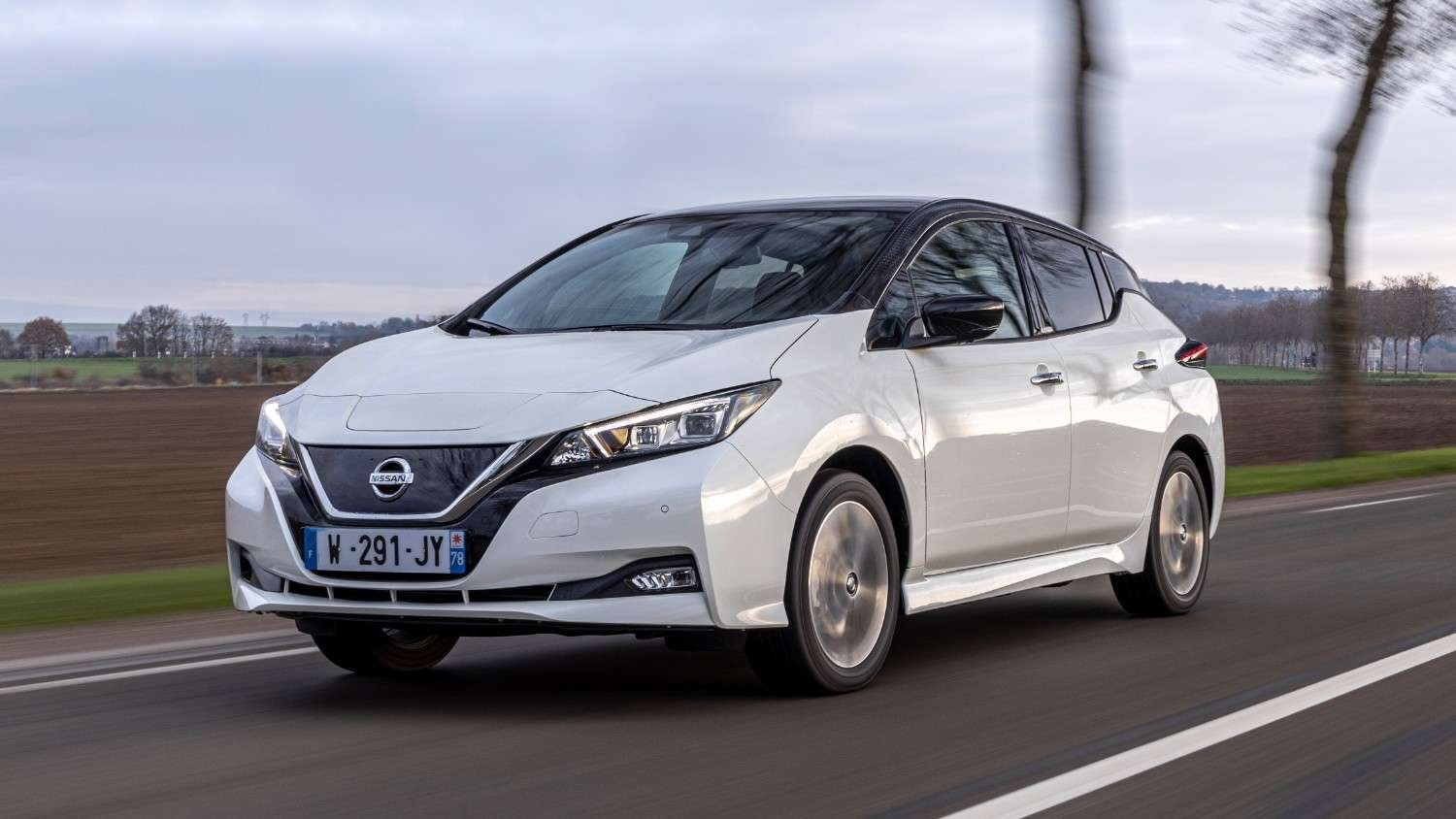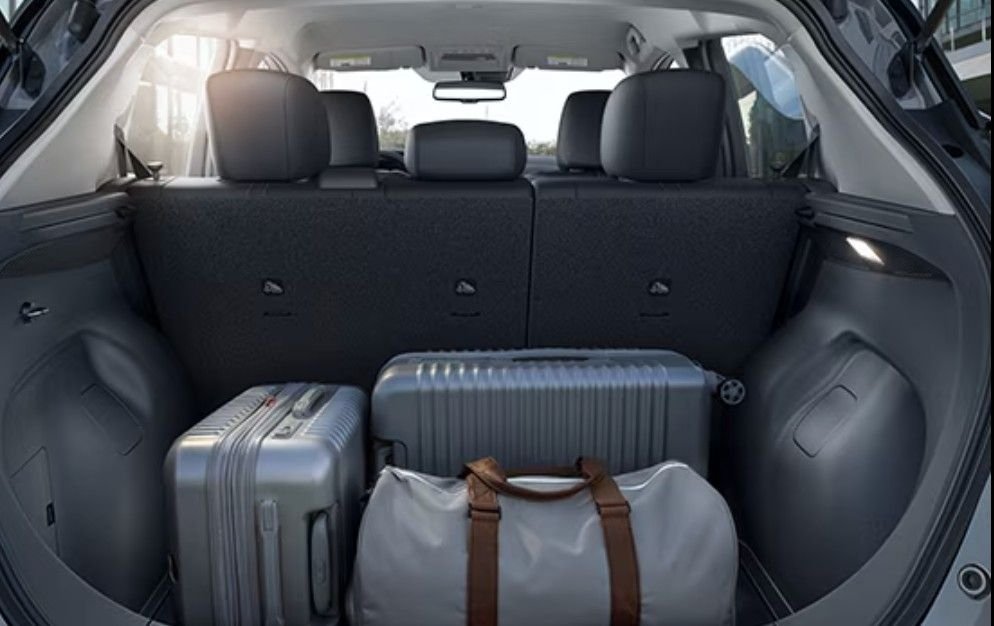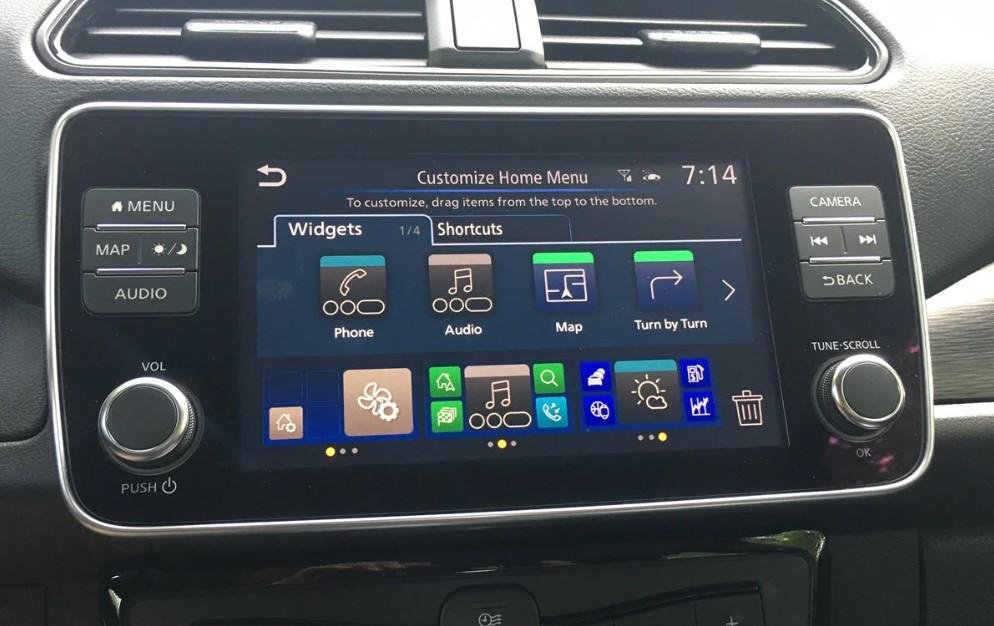Nissan EV Salary Sacrifice
Key insights:
The Nissan Leaf remains one of the most affordable ways to go electric, with salary sacrifice cutting monthly lease costs to just £255, down from over £400, thanks to income tax and National Insurance savings.
The Ariya combines premium design with practical features like a movable centre console, twin digital displays, and up to 310 miles of range, making it a refined and tech-forward SUV for as little as £408 a month via salary sacrifice.
From compact hatchbacks to stylish crossovers, Nissan’s electric lineup suits a range of drivers and with The Electric Car Scheme, employees can save up to 50% on leasing compared to traditional providers.
This image is sourced from https://en.wikipedia.org/wiki/Nissan_Hypermini
The history of the electric Nissan can be traced back to 1947, much like the history of many automobile companies. The TAMA was the first electric Nissan to be produced and was followed by a four-door sedan two years later. The Prairie Joy followed and was the first electric car to use lithium-ion batteries. The battery was tested in polar conditions which meant the car was silent and emission-free. After the success there, Nissan released the Hypermini in 2000 which was a commuter, two-seater which came at a top speed of 100kph and could travel 11km on a single charge.
In this blog, we will be discussing the two Nissan models we have available at The Electric Car Scheme through electric car salary sacrifice. These models include the Nissan Ariya and the classic, Nissan Leaf.
Salary sacrifice schemes have become increasingly popular over the last couple of years because employees can save by paying for things directly from their salary before tax. New research conducted by our team at The Electric Car Scheme revealed that 83% of companies plan to offer an electric car salary sacrifice scheme in 2024. You can learn more about how salary sacrifice schemes work by visiting our blog: Are Salary Sacrifice Schemes a good idea?
Let’s take a closer look at the Nissan Models available to lease from The Electric Car Scheme.
Salary Sacrifice the Nissan Leaf
The Nissan Leaf, commonly stylized as "LEAF," is a compact battery-electric car manufactured by Nissan since 2010. It's credited with laying the groundwork for modern EVs. Nissan asserts that by redefining the concept of automobiles, the LEAF contributes to fostering a more sustainable future for customers, cities, and governments. The Nissan Leaf has surpassed 650,000 units in global sales as of July 2023. Sold in 50 markets, with a focus on Japan, the US, and Europe, the model garners widespread acclaim from customers worldwide and has earned numerous awards across various markets.
The Nissan Leaf offers an enticing entry point into electric vehicle ownership, boasting reliable performance and a sleek design. Its distinctive front and optional contrasting roof enhance its appeal. While base models may appear modest, higher-spec versions feature partial leather seats with blue stitching for added interior character. Notably, all models come equipped with standard infotainment technology, including navigation, smartphone mirroring, and a digital driver's display, without any additional cost.
The two battery options offer distinct differences. The standard 148bhp model provides a range of 168 miles between charges, while the higher-specification 214bhp Leaf e+ offers a more convenient range of 239 miles.
The Nissan Leaf's RRP ranges from £28,495 to £31,995, but leasing through The Electric Car Scheme offers significant savings of 20-50% per month compared to leasing from other providers. The base model includes a Tekna Trim, Nissan’s Safety Shield driver assist package, and an 8.0-inch infotainment unit. Opting for a higher-trim option provides more technology for your investment and a more practical battery capacity.
If your employer offers The Electric Car Scheme as an employee benefit you can save £164 a month by salary sacrificing the Nissan Leaf. You will save £156 per month on income tax savings and £8 on National Insurance savings because the amount you salary sacrifice is taken from your pay before tax. Therefore, you will only need to pay £255 a month to lease the Nissan Leaf!
The Electric Car Scheme's quote tool is user-friendly and adaptable, allowing you to tailor your preferences. You can select your ideal car, input your salary, choose your desired lease term length, and receive an estimated cost based on your input. This intuitive and customisable feature ensures that you can find the perfect electric vehicle while staying within your budget. Visit the quote tool here.
What’s the LEAF like to drive?
The Nissan Leaf delivers swift and responsive performance, ensuring comfort in urban settings and motorways. Its simplicity and reliability contribute significantly to its popularity. However, it's worth noting that other electric cars on the market may offer a sportier driving experience - but this is to be expected.
Around towns and cities
This image is sourced from https://www.telegraph.co.uk/cars/nissan/nissan-leaf-review-electric-car-finally-persuade-conventional/
Clear visibility and a comfortable driving position enhance the enjoyment of navigating towns or cities in the Nissan Leaf. While a side pillar may partially obstruct the view over your shoulder, the standard rearview camera will help when parking. For advanced parking assistance features like front and rear parking sensors, a surround-view monitor, and object detection, you'll need to opt for a higher trim level at an additional cost. However, due to its relatively compact size, fitting into most parking spaces is typically hassle-free. The e-Pedal feature facilitates one-pedal driving, simplifying town driving significantly.
If you mainly drive around cities, particularly if extended range isn't a priority, the lighter models with a 39kWh battery pack are ideal. The smaller battery reduces weight and enhances ride comfort by minimizing the impact of bumps compared to the 59kWh model.
Driving on the motorway
The Nissan Leaf provides a refined and quiet experience on the motorway. If motorway travel is a regular part of your routine, the 59kWh battery model is recommended for its extended range. With minimal wind and road noise, the Leaf offers ample space to comfortably accommodate four adults, a feature often overlooked but appreciated.
The Leaf also has ProPilot, an autonomous driver assistance feature that enhances longer journeys by handling steering, braking, and acceleration tasks.
Driving on country lanes
The Leaf isn't designed for driving on country lanes; its focus lies on comfort and usability. While it may not exude a sporty feel, it does demonstrate competence on winding roads with commendable grip levels. Both battery models of the Nissan Leaf exhibit responsiveness and provide ample acceleration at low and medium speeds.
Space inside the Nissan Leaf
This image is sourced from https://www.nissan.co.uk/vehicles/new-vehicles/leaf/dimensions-specifications.html
In the Nissan Leaf, accommodating four adults comfortably is effortless, despite its hatchback design. The elevated seating position for the driver can feel like you’re behind the wheel of a SUV. Seats are plush, with the option for leather/suede upholstery on higher trims. There is no shortage of storage inside, with spacious door bins and a convenient area in front of the gear lever for storing items like phones, equipped with a 12-volt socket and USB port. A deep central storage bin behind the cupholders adds to the convenience.
In the rear, seating up to three individuals is feasible, with plentiful knee and legroom. However, the slightly raised seating position may pose a challenge for taller passengers brushing against the sloping roofline. ISOFIX mounts are available in the rear, with the option for front mounts at an additional cost.
The Leaf offers a generous 435 litres of boot space with the rear seats upright, surpassing competitors like the Hyundai Kona with 335 litres and the Peugeot e-208 with 311 litres. Tether points ensure secure storage, though a high-load lip may pose difficulty when loading heavier items. Folding the rear seats expands cargo capacity to an impressive 1,176 litres, surpassing the Peugeot e-208's 1,106 litres.
Interior and Infotainment in the Nissan Leaf
This image is sourced from https://www.toomeymotorgroup.co.uk/nissan/used-cars/leaf/tekna/39kwh-tekna-hatchback-5dr-electric-auto-150-ps/32716
Inside the Leaf, the materials and infotainment systems, while not groundbreaking, offer functionality and reliability. Unlike some alternatives with a futuristic aesthetic, the Leaf maintains a more traditional interior, exemplified by its half-digital, half-analog driver display. Base trim levels may exhibit some areas of cheapness due to the presence of hard plastics. However, opting for the N-Connecta trim introduces leather materials in select areas, while the range-topping Tekna further elevates luxury with leather dashboards and additional trim inserts.
The 8-inch touchscreen infotainment system is feature-rich, with a DAB radio, navigation with voice control, and an EV telematics system that locates charging stations along your route. Apple CarPlay and Android Auto integration allow seamless access to your preferred navigation and streaming apps.
On the Tekna trim, a six-speaker audio system is standard, while an accompanying app enables remote control over cooling, heating, and charging functionalities, adding convenience to the Leaf's repertoire.
Salary Sacrifice the Nissan Ariya
This image is sourced from https://www.shropshirestar.com/news/motors/2023/05/24/ariya-pushes-the-technology-boundaries/
Twelve years following the initial release of the Nissan Leaf, the Nissan Ariya debuted in January 2022 (summer in the UK), marking Nissan's foray into the compact crossover SUV segment. Produced at Nissan’s Tochigi Prefecture factory, the Ariya represents the brand's inaugural zero-emissions SUV offering. Sporting a distinctive design, the Ariya features a sizable front grille, a sloping roofline, and a single rear light, which gives it a futuristic appeal, despite common trends in contemporary car designs. An optional contrast roof adds a personalized touch to the exterior aesthetic.
Inside, the Ariya boasts a stylish interior characterized by clean dashboard lines, two prominent digital displays, and seamlessly integrated materials. Notably, a movable centre console enhances versatility by facilitating adjustments to maximize passenger space and comfort, reminiscent of features found in the Hyundai Ioniq 5. You can read more about the Hyundai’s available salary sacrifice by reading our blog: Hyundai Salary Sacrifice.
With an entry-level Engage trim, the Nissan Ariya starts at £40,000, equipped with a 63kWh battery. Comparable to the Skoda Enyaq, which offers a 60kWh battery and similar range, the Ariya offers abundant standard features that competitors often relegate to optional extras.
Notably, the Nissan Ariya is eligible for salary sacrifice, enabling savings of 20-50% on standard lease costs by deducting the price from employees' salaries before tax. Opting for leasing through The Electric Car Scheme can result in substantial savings, with potential savings of £7,578 compared to independent leasing options.
What is the Nissan Ariya like to drive?
The Ariya is smooth and refined but also fun to drive - which is where the Leaf lacks excitement - the suspension also remains firm which makes for a better driving experience. Let’s see what it’s like to drive in different situations…
Around towns and in cities
The Nissan Ariya offers an instant surge of power for swift acceleration, maintaining silent operation and low battery consumption to maximize mileage. However, the firm suspension, while enhancing stability, can result in increased noise, particularly over larger bumps, compromising the smoothness of the driving experience compared to rivals like the Audi Q4 e-Tron.
Despite the firm suspension, the steering remains light, and the car manoeuvres easily in tight spaces, aided by its average turning circle of 11.6 metres. Good visibility, thanks to the low-set dashboard, is offset by blind spots caused by the windscreen pillars, a common issue in many vehicles. Limited rear visibility due to shallow rear glass and large pillars further exacerbates blind spot concerns, though mitigated to some extent by the inclusion of a standard 360-degree camera system with sensors, moving object identification, and emergency braking.
The e-pedal system, inherited from the Leaf, utilizes regenerative braking for efficient deceleration, particularly beneficial in urban environments. Offering three levels of regenerative braking—off, B-mode for the gearbox, and e-pedal—the system provides versatility in driving dynamics. However, unlike the Leaf, the e-pedal feature in the Ariya doesn't bring the car to a complete stop, requiring manual braking intervention to halt completely.
Performance on the motorway
The Nissan Ariya offers comfort on motorways, featuring spacious and supportive front seats and a smooth suspension that absorbs bumps and enhances ride quality as speeds increase. While some wind noise around the door mirrors and window edges is noticeable, it's a common characteristic in electric vehicles, where the absence of engine noise may draw attention to other sounds.
Fortunately, road noise remains minimal, contributing to a serene driving experience. However, it's worth noting that at higher speeds, sustained travel at 70mph can lead to a quicker depletion of the Ariya's range on motorways.
To aid drivers during longer journeys, the Ariya is equipped with advanced electronic driving aids, notably the ProPilot radar-guided cruise control and lane-guidance steering systems. These features enhance safety and convenience by assisting with speed regulation and lane-keeping, particularly beneficial for extended highway drives.
Driving on country lanes
The Ariya performs well on country lanes because there is very little body roll and steering is very responsive. The brakes feel natural and in front-wheel-drive, it feels quick with a 217hp electric motor.
Space inside the Nissan Ariya
This image is sourced from https://www.parkers.co.uk/nissan/ariya/review/practicality/
The interior of the Nissan Ariya offers ample comfort and space. Up front, adjustable cupholders, a standard front armrest, and a convenient upright tray for phone storage are accompanied by USB, USBC, and a 12-volt socket. Beneath the armrest lies a shallow storage area housing a wireless phone charger. A felt-lined drawer in the dashboard's centre, accessible via a touch-sensitive button, provides additional storage, capable of accommodating a tablet. Door storage is plentiful, though lacking felt lining, potentially causing some noise from stored items.
Similar to the Ioniq 5, the Ariya features a movable centre console, enhancing versatility. In the rear, passengers benefit from generous legroom due to a flat floor and the absence of a transmission tunnel. Deep rear seats offer excellent leg support for longer journeys, comfortably accommodating three passengers, although the middle seat may feel slightly elevated and less comfortable. The low roofline does sacrifice some headroom, particularly pronounced with the panoramic glass roof option. Higher-spec Ariya models like the Evolve offer heated rear seats and additional USB sockets for backseat passengers. Rear-facing child seats fit without compromising front seat space.
The boot boasts a capacity of 466 litres, slightly smaller than rivals like the Skoda Enyaq with 585 litres. Four-wheel-drive variants sacrifice space due to the rear electric motor, offering 408 litres of storage. Standard models feature a dual-part adjustable boot floor, providing versatility in organising cargo. Side storage bins and tie-down points are present, though there's no 12-volt socket in the boot, necessitating storage of charging cables inside. Notably, there's no front boot available.
Interior and Infotainment in the Nissan Ariya
This image is sourced from https://www.carthrottle.com/reviews/kia-ev9-review-big-heavy-electric-car-actually-makes-sense
Exploring the finer details of the Ariya proves to be a satisfying experience. The two-spoke steering wheel, adorned with buttons and haptic controls resembling wood trim, provides convenient access to air conditioning functions—an improvement over buried climate controls within on-screen menus, which can complicate simple tasks.
Soft-touch materials envelop the cabin, contributing to a premium feel. Optional blue Nappa leather seats feature a NASA-inspired design pattern, promoting blood flow and reducing fatigue during extended periods of sitting. While a vegan-friendly option is available for seat upholstery, a completely vegan interior isn't possible due to the genuine leather covering on the steering wheel.
An immersive head-up display projects vital information onto the windshield, enhancing driver awareness. Twin screens for infotainment and instrument displays are intuitively organized, facilitating easy navigation. Standard electric seat adjustment and ample steering wheel adjustments ensure a comfortable driving position, with higher-spec models featuring electronic steering wheel adjustment.
Moreover, higher-spec models offer an electric rear-view mirror, capable of switching to display the rear-facing camera feed—a useful feature when tall passengers occupy the rear seats.
Range and charging in the Ariya
The Nissan Ariya is available in two battery versions: a 63kWh variant offering a range of up to 250 miles and an 87kWh option boasting a claimed range of 310 miles. Opting for the e-Force (or e-4orce) variant slightly reduces the range to 285 miles but increases power output to 306hp, compared to the standard model's 217hp or 242hp.
Nissan has transitioned from the CHADEMO charger to the more contemporary CCS charging standard, enabling charging speeds of up to 130kW from fast public DC charging points. For AC charging, the Ariya offers 7.4kW charging capacity, translating to a 14-hour charge time for the largest battery (87kWh) from 0%. Additionally, 22kW AC charging is available, facilitating convenient pavement charging.
You can lease the Nissan Ariya 170kW Advance 87kWh for £408 per month with The Electric Car Scheme. This means you will save £247 in income tax savings and £12 on National Insurance savings every month.
48% of UK employees now value “green benefits” and are more likely to feel motivated at a company that offers these, and 44% said they’re more inclined to stay at a company like this. This is a great opportunity not only to make electric vehicles more accessible but also improve employee retention and happiness at your company. You can read more about the top 10 most popular employee benefits of 2024 in our blog.
Happy employees, happy company. The Electric Car Scheme is a great employee benefit to make electric vehicles more accessible and salary sacrifice makes this possible. If you’re a decision-maker at a company, you can learn more about The Electric Car Scheme here.
You can also see what an impact the scheme makes by watching the testimonial from one of our clients, Dreams.









